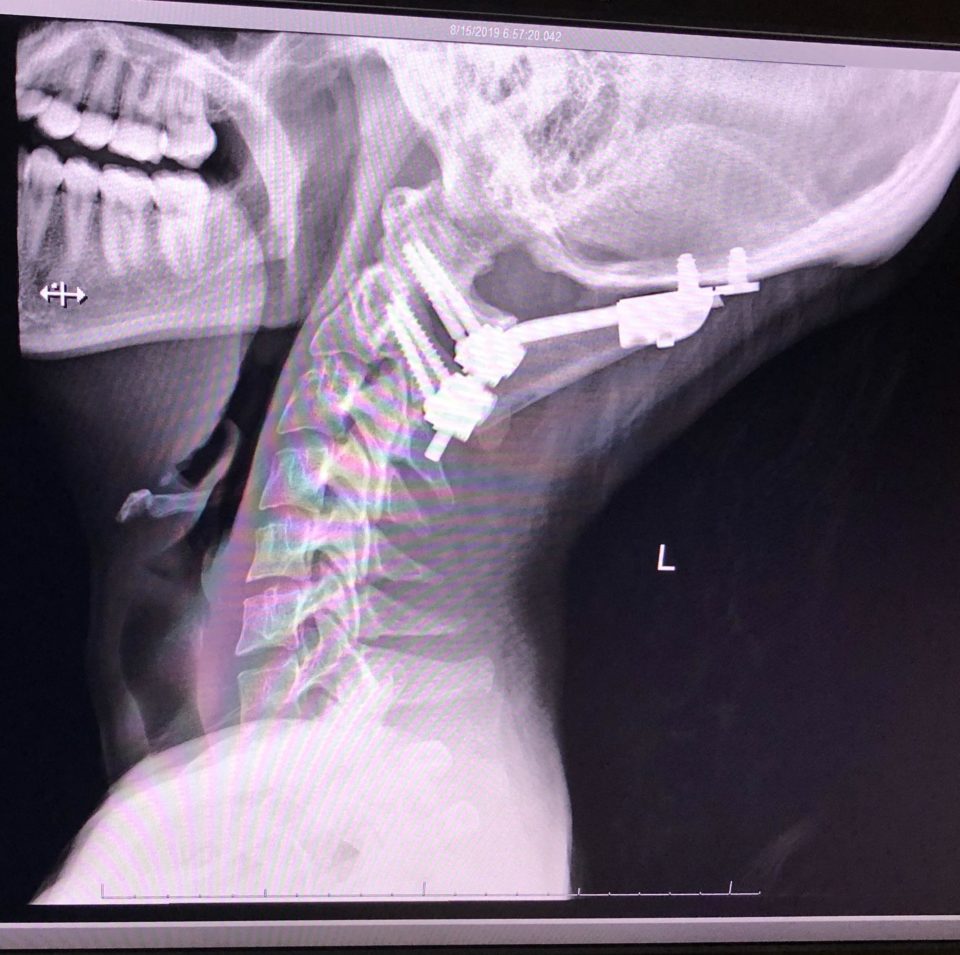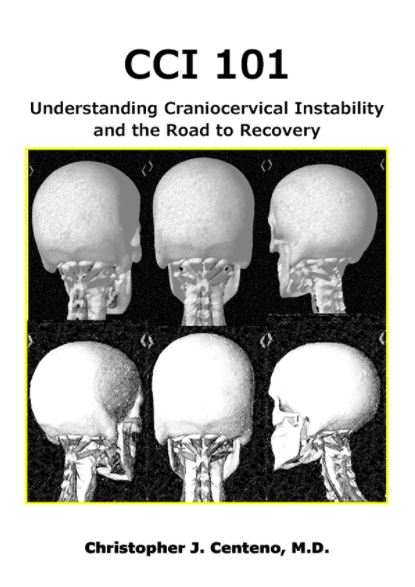The car accident was at low speed and you hit your head on the headrest. You are left with constant headaches, dizziness, and mental fog that is all new. Regrettably, your doctors are all baffled and think it may be psychological or post-traumatic stress disorder.
What is craniocervical instability? What causes it? How is it treated? Are there non-surgical treatment options? What’s an upper cervical ligament stem cell injection? Let’s dig in.
What is Craniocervical Instability (CCI)?
First, some basic anatomy and terminology are required. Your head is also referred to as the cranium. The neck is also known as the cervical spine. The craniocervical junction is simply where your head meets the neck. The head is connected to the cervical spine by important ligaments. These ligaments provide important stability that keep your head, brain, and spinal cord snugly attached to your neck. Damage to the ligaments can cause excessive movement between the head and neck which is called craniocervical instability (1).
What Causes Craniocervical instability?
Trauma, degeneration, and genetic disorders that affect collagen and ligament strength all can cause craniocervical instability (2). The most common symptoms associated with CCI include
- Severe Headache: Unlike the garden variety headache this is a headache that is constant, involves most of the head, and stops you in your tracks.
- Dizziness/Balance Dysfunction: Simple tasks like walking down the hall or across the street are impossible at times due to the dizziness (3).
- Brain Fog: Mental fog and delayed mental processing that prevent completion of simple tasks such as domestic chores and self-care.
Other symptoms may include increased heart rate, changes in GI function, visual problems, irritability and mood swings
How is Craniocervical Instability (CCI) treated?
The severity of the craniocervical instability dictates treatment. Conservative care is the first-line treatment when appropriate and includes chiropractic care and cervical stabilization. When these fail many patients are referred for surgery.
The surgery is significant and involves a fusion of the back of the head (occiput) and cervical spine. It involves screws that are placed in the skull and cervical spine and rods that connect the two. The goal of surgery is to stabilize the head/neck junction. The surgery is extensive, fraught with risks, and forever changes a patient’s ability to move the neck and head. The x-ray in the featured image is an occipital cervical fusion used to treat CCI.
Upper Cervical Ligament Stem Cell Injection
Surgical fusion was the standard treatment of CCI until 2015 when the Centeno-Schultz Clinic developed the first nonsurgical treatment. The procedure involves the placement of a patient’s own bone marrow-derived stem cells into the damaged ligaments that stabilize the craniocervical junction. The stem cells are injected through a needle that is placed in the back of the mouth and carefully advanced into the damaged ligaments using x-ray guidance.
This procedure is called the PICL which stands for the Percutaneous Injection of Cervical Ligaments. It is an extremely demanding procedure given the spinal cord and other important structures are only millimeters from the injected ligaments.
Orthopedic surgeons and neurosurgeons are not able to perform this procedure. In fact, the Centeno-Schultz Clinic is the only place in the world that performs the PICL procedure. The Craniocervical Joint (CCJ) Instability Institute provides an in-depth opportunity to learn more about CCI and regenerative options. To learn more about the PICL procedure please watch the video below.
Treatment results to date have been transformative and in many cases life-changing for many patients. Today I had the pleasure of seeing one of my patients who underwent the PICL procedure. Meet Mike.
In Conclusion
Craniocervical instability involves excessive movement between the head and neck. Ligaments are thick bands of connective tissue that connect one bone to another. Cervical ligaments provide stability for the head-neck junction. Damage, wear and tear, and genetic disorders can compromise these ligaments leading to instability. Vital structures such as the brain, brainstem, spinal cord, and nerves are irritated during this excessive movement.
Traditional treatment for symptomatic cases of CCI that failed conservative care involves the fusion of the head to the spine. The PICL is an effective, non-surgical treatment option for patients with craniocervical instability. This unique upper cervical ligament stem cell injection procedure allows patients to use their own bone marrow-derived stem cells to accelerate healing of the damaged or weakened ligaments and avoid the complications of surgery.
References
1.Offiah CE, Day E. The craniocervical junction: embryology, anatomy, biomechanics and imaging in blunt trauma. Insights Imaging.2017;8(1):29–47. doi:10.1007/s13244-016-0530-5
2.Klein GN, Mannion AF, Panjabi MM, Dvorak J. Trapped in the neutral zone: another symptom of whiplash-associated disorder?. Eur Spine J. 2001;10(2):141–148. doi:10.1007/s005860100248
3 Thompson-Harvey A, Hain TC. Symptoms in cervical vertigo. Laryngoscope Investig Otolaryngol. 2018;4(1):109–115. Published 2018 Nov 28. doi:10.1002/lio2.227.


